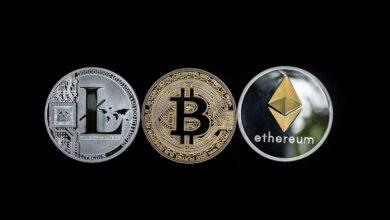Peer-to-Peer vs. Traditional Crypto Exchanges – Choose Wisely

In the rapidly evolving landscape of cryptocurrency, the decision-making process surrounding the selection of an exchange is fraught with intricacies. As enthusiasts and investors, we find ourselves navigating a complex web of options, from peer-to-peer (P2P) platforms to traditional centralized exchanges. Each choice presents its own set of advantages and drawbacks, compelling us to delve deeper into the underlying principles that govern these systems. Understanding the nuances between decentralized and centralized platforms is not merely an academic exercise; it is a crucial step in safeguarding our investments and optimizing our trading strategies.
When deciding on the most suitable platform for your cryptocurrency transactions, the dichotomy between P2P exchanges and standard trading venues becomes apparent. Traditional exchanges often provide a sense of security and user-friendly interfaces, but they sometimes come at the cost of personal privacy and autonomy. On the other hand, P2P platforms advocate for a more democratic approach, allowing users to engage directly with one another, thereby bypassing the intermediaries that characterize conventional exchanges. This fundamental difference raises essential questions about trust, control, and the very essence of what it means to participate in the cryptocurrency ecosystem.
As we embark on this analytical exploration of how to choose between these competing models, we must remain vigilant in our assessment of both decentralized and centralized exchanges. The decision ultimately boils down to individual preferences regarding security, accessibility, and financial goals. Choosing wisely requires not just an understanding of each platform’s features but also a recognition of the philosophical underpinnings that drive their existence. In this article, we will dissect the key elements involved in selecting between P2P and conventional crypto exchanges, equipping you with the knowledge necessary to make informed choices in this dynamic arena.
Choosing Between Peer-to-Peer and Traditional Crypto Exchanges
In the rapidly evolving world of cryptocurrency, the choice between peer-to-peer (P2P) and traditional centralized exchanges is pivotal for investors and traders alike. Each of these platforms offers distinct advantages and disadvantages that can significantly impact your trading experience. Understanding the fundamental differences between these options is essential in making an informed decision that aligns with your individual needs and risk appetite.
When deciding on a platform, one must consider the operational mechanics of both exchange types. Centralized exchanges, often characterized by their conventional structures, act as intermediaries that facilitate transactions between users. This model typically offers greater liquidity, faster transaction speeds, and a user-friendly experience. However, it comes at a cost: users must trust the exchange to safeguard their funds and personal information. In contrast, P2P exchanges operate on a decentralized model, allowing users to trade directly with one another, thus eliminating the need for a trusted third party. This method enhances privacy and can reduce fees but may also present challenges regarding liquidity and price volatility.
Choosing between decentralized and centralized platforms further complicates the decision-making process. Decentralized exchanges (DEXs) provide a higher level of autonomy over one’s assets since they do not require deposits on the platform itself. Users retain control of their private keys, significantly reducing the risk of hacks or mismanagement typical of centralized exchanges. However, DEXs often come with lower trading volumes and may lack some features found in traditional platforms, such as advanced trading tools or customer support.
The nuances of P2P versus standard cryptocurrency platforms also merit careful consideration. P2P platforms cater particularly well to those who prioritize privacy and want to circumvent KYC (Know Your Customer) regulations commonly enforced on centralized exchanges. This appeal is particularly strong in regions where banking systems are less reliable or where users face stringent financial regulations. However, the responsibility for conducting due diligence lies entirely with the user–a factor that can introduce risks if one is unfamiliar with their trading counterpart.
On the other hand, conventional crypto exchanges often provide a more structured environment, complete with regulatory oversight which can offer an additional layer of security for traders. These platforms typically implement robust anti-fraud measures and customer support services that assist users in navigating their trading experiences smoothly. Nevertheless, this structure can lead to potential pitfalls such as account freezes or restrictions on withdrawals, especially in times of market volatility.
In conclusion, choosing between peer-to-peer and traditional exchanges ultimately depends on your individual priorities–be it speed, security, privacy, or user experience. The decision may also reflect broader trends within the cryptocurrency ecosystem itself as innovations continue to emerge in both decentralized and centralized models. As you weigh your options on these platforms, consider your trading habits, risk tolerance, and long-term goals in order to select a solution that serves both your immediate needs and future aspirations in this dynamic digital landscape.
Understanding Peer-to-Peer Exchanges
In the rapidly evolving world of cryptocurrency, the choice between peer-to-peer (P2P) exchanges and traditional platforms has become increasingly significant for both novice and experienced traders. P2P exchanges represent a decentralized approach to trading, allowing users to transact directly with each other without the need for an intermediary. This model not only promotes privacy and autonomy but also reduces the fees typically associated with centralized exchanges. Understanding these fundamental differences is crucial when deciding how best to engage with the crypto market.
When selecting between P2P and conventional crypto exchanges, one must consider the inherent characteristics of each platform. Conventional exchanges, while often more user-friendly and equipped with advanced trading features, typically operate under a centralized model. This means that they hold users’ funds and personal data, which can present security risks. Conversely, P2P platforms empower users by enabling them to retain control over their assets throughout the transaction process. This fundamental shift in ownership is a compelling reason many are choosing P2P options.
Deciding on whether to utilize peer-to-peer or standard cryptocurrency platforms also involves evaluating factors such as liquidity and the availability of trading pairs. Centralized exchanges often boast higher liquidity, meaning users can execute trades more swiftly and at better prices. However, liquidity can vary significantly across P2P platforms depending on the user base and regional demand for specific cryptocurrencies. Traders should analyze their trading needs and preferences before making a decision, as this can substantially impact their overall experience.
Choosing between decentralized and centralized crypto exchanges further complicates the decision-making process. Decentralized exchanges (DEXs) function similarly to P2P platforms in that they do not require users to deposit funds into a central account. This reduces counterparty risk but may lead to challenges such as lower liquidity and less intuitive interfaces. On the other hand, centralized exchanges are typically more efficient for high-volume trading but introduce third-party risks that some users find unacceptable.
Moreover, regulatory considerations play a pivotal role in selecting the appropriate exchange type. Centralized exchanges are often subject to government oversight, which can provide a layer of security but may also impose restrictions on trading activities. In contrast, P2P platforms tend to operate in a more ambiguous regulatory environment, appealing to those who value anonymity and freedom from governmental control. As regulations surrounding cryptocurrency continue to evolve, staying informed about these dynamics is essential for making educated choices.
In conclusion, understanding the nuances of peer-to-peer exchanges versus traditional crypto platforms requires careful consideration of various factors including security, liquidity, user experience, and regulatory implications. By weighing these aspects thoughtfully, individuals can make informed decisions that align with their trading goals and risk tolerance. Whether one ultimately chooses P2P or conventional exchanges will depend on their priorities in the ever-complex landscape of cryptocurrency trading.
Benefits of Traditional Crypto Exchanges
When navigating the complex world of cryptocurrency trading, one must consider the advantages offered by traditional crypto exchanges. These centralized platforms have established themselves as the backbone of the digital currency ecosystem, providing users with a streamlined experience for buying and selling assets. The benefits are manifold: enhanced liquidity, robust security measures, and user-friendly interfaces that cater to both novice and seasoned traders. Traditional exchanges often offer a diverse range of cryptocurrencies, facilitating easy access to various markets without the need for extensive research on individual tokens.
Deciding on the right trading platform involves a careful examination of the key differences between peer-to-peer (P2P) and standard cryptocurrency exchanges. While P2P platforms enable users to trade directly with one another, bypassing intermediaries, traditional exchanges serve as custodians that manage transactions and hold assets securely. This centralization often leads to faster transaction times and lower chances of fraud, as traditional exchanges implement stringent Know Your Customer (KYC) protocols. However, these benefits come at the cost of greater control over one’s assets, prompting traders to weigh their priorities when choosing a platform.
The choice between decentralized and centralized crypto exchanges is yet another layer in this multifaceted decision-making process. Decentralized exchanges (DEXs) provide users with autonomy over their funds while promoting transparency through blockchain technology. Nevertheless, they can suffer from lower liquidity and more complex user experiences. In contrast, centralized platforms offer a more reliable trading environment with customer support services and higher liquidity levels. As traders evaluate their preferences, it becomes crucial to consider whether they value control over convenience or if they prioritize security over autonomy.
Ultimately, selecting between P2P and conventional crypto exchanges requires a nuanced understanding of individual trading needs and goals. For those who prioritize privacy and direct peer interactions, P2P platforms may seem appealing. Yet, for individuals seeking efficiency and comprehensive customer support, traditional exchanges remain the preferred choice. By carefully considering factors such as security, usability, and liquidity, traders can make informed decisions that align with their investment strategies in this ever-evolving digital landscape.
Conclusion: Navigating the Landscape of Crypto Exchanges
In our journey through the intricate world of cryptocurrency, we have examined the vital considerations that arise when selecting between traditional platforms and their more avant-garde counterparts. The decision to choose between peer-to-peer (P2P) exchanges and conventional centralized systems is not merely a matter of preference; it embodies a deeper philosophical stance on trust, autonomy, and the future of digital finance. Each model presents unique advantages and challenges that can significantly impact your trading experience.
As you stand at this crossroads, remember that the essence of your choice lies in understanding your own needs and priorities. Are you inclined towards the decentralized ethos of P2P exchanges, where you can engage directly with other users, often enjoying lower fees and greater privacy? Or do you find comfort in the structure and reliability offered by traditional cryptocurrency platforms, which provide robust customer support and a plethora of trading tools? The answer is nuanced, shaped by your approach to risk, control, and the complexities of transactions.
- Decentralized vs. Centralized: Deciding between these two paradigms requires balancing convenience against security. While centralized exchanges may offer an easier onboarding process, P2P platforms allow for greater privacy and potentially lower costs.
- Standard Features: When choosing a platform, consider what features are essential for your trading strategy. Do you need advanced charting tools? Instant transaction capabilities? Each type of exchange has its strengths.
- Community Engagement: Engage with communities around both types of exchanges. Your experience can be enriched through shared knowledge and insights from other users. Often, the best guidance comes from those navigating similar waters.
Ultimately, whether you lean towards the tried-and-true methods of conventional crypto exchanges or embrace the innovative spirit of peer-to-peer trading, it is crucial to make an informed decision. Equip yourself with knowledge, assess your risk tolerance, and choose wisely as you embark on this exciting venture into the world of cryptocurrency. In doing so, you not only shape your financial future but also contribute to the evolving narrative of digital currencies in our society.





